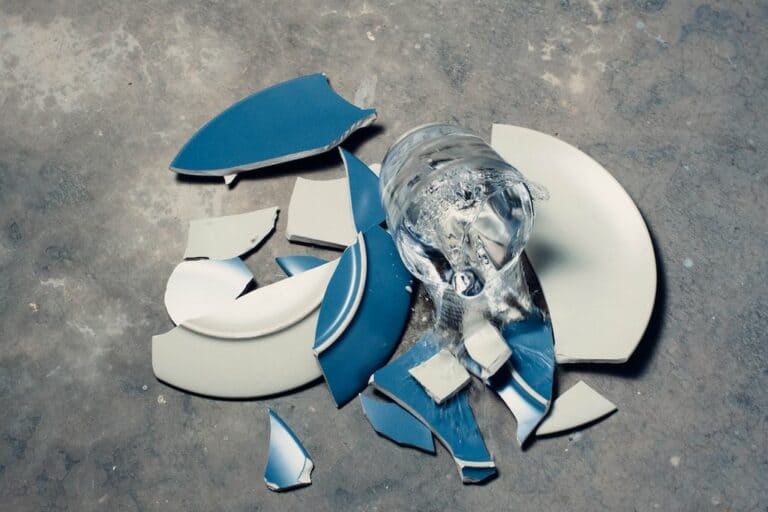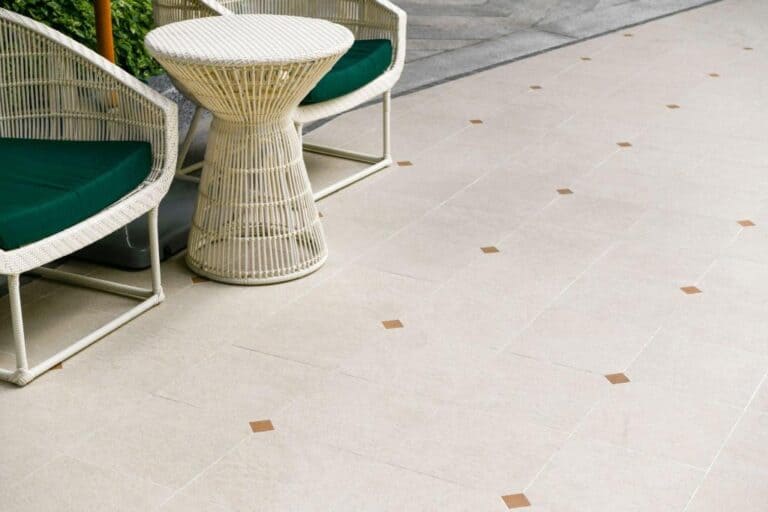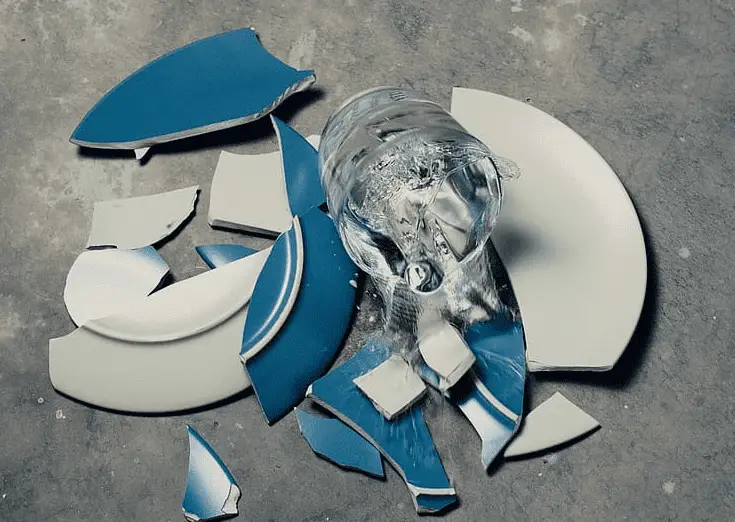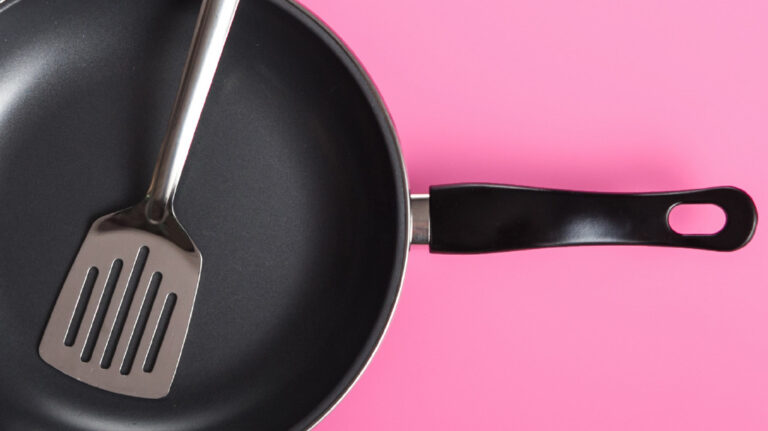Which One is Easier to Cut Ceramic or Porcelain Tile? (Which One’s Harder?)
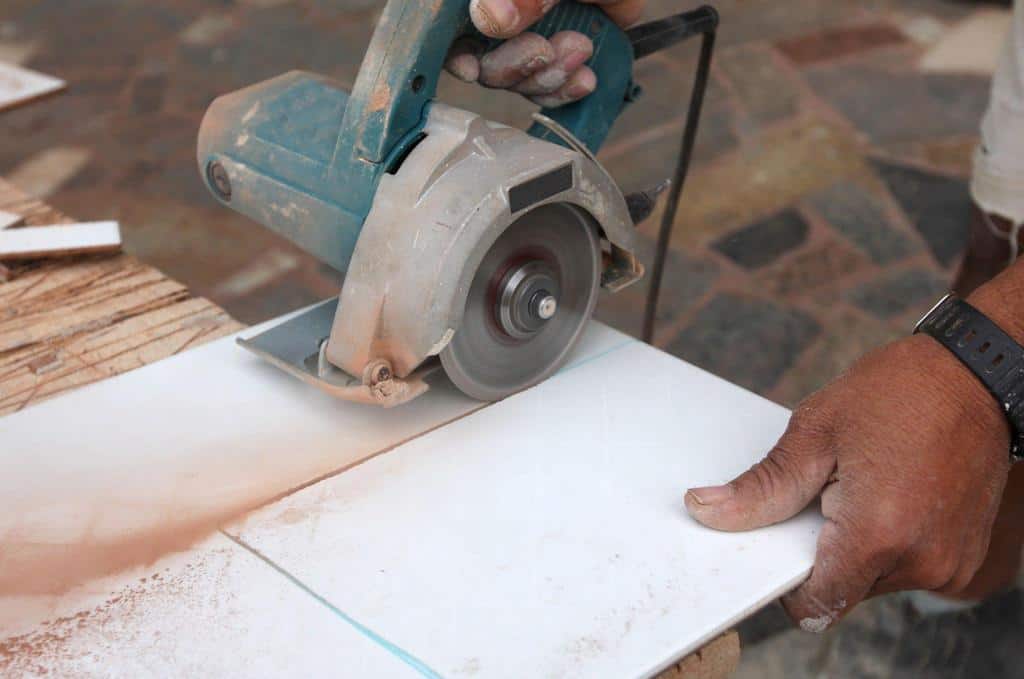
Tile cutting is a crucial step in any tile installation project, whether it’s for a home renovation or a commercial construction project. The type of tile you choose will affect the ease of cutting, and it’s important to consider this factor when selecting the tile for your project.
Ceramic and porcelain tile are two of the most popular types of tile, but which one is easier to cut? This question is often asked by DIYers and professionals alike, and it’s essential to understand the difference between the two types of tile to determine which one is harder.
If you’re trying to decide between ceramic or porcelain tile for your next home improvement project, you need to understand which one is easier to cut. Generally speaking, cutting ceramic tile is simpler and easier than cutting porcelain tile. Ceramic tile is easier to cut with a wet saw or grinder than porcelain tile because it is softer and less dense.
In this article, we will examine the characteristics of ceramic and porcelain tile, and compare their ease of cutting to help you decide which type of tile is best for your project.
Ceramic and Porcelain Tile Basic
Ceramic tile is a type of tile made from clay that has been fired at high temperatures. It is a popular choice for flooring, countertops, and walls due to its durability and low cost.
Porcelain tile, on the other hand, is a type of ceramic tile that is made from a denser, harder type of clay. It is also fired at higher temperatures than ceramic tile, which makes it even more durable and resistant to moisture. Porcelain tile is often used in high-traffic areas and outdoor spaces. On the other hand, ceramic tiles are used outside less; they are more for indoor areas.
The purpose of the article is to determine which type of tile is easier or harder to cut. This information can be useful for DIYers who are planning to install tile in their home or for professionals who work with tile on a regular basis.
Comparison of Cutting Ceramic and Porcelain Tile
- Ceramic tile is generally less dense and harder than porcelain tile. This means that it is slightly easier to cut, but it may also be more prone to cracking or chipping.
- The tools and equipment needed for cutting ceramic tile are similar to those needed for cutting porcelain tile. A tile cutter, a tile saw, or a wet saw can all be used to make straight cuts, while a tile nipper or a tile cutter with a scoring wheel can be used to make irregular cuts.
- The technique for cutting ceramic tile is similar to the technique for cutting porcelain tile. Both types of tile can be marked with a pencil or a tile cutter, and then scored with a tile cutter or a tile saw.
- One advantage of cutting ceramic tile is that ceramics are less brittle than porcelain tile, so it is less likely to crack or chip. However, porcelain tile is more durable and resistant to moisture, so it may be a better choice for high-traffic areas or outdoor spaces.
Which One Is Easier to Cut Ceramic or Porcelain Tile?
When it comes to cutting tile, ceramic tile is generally considered easier to work with than porcelain tile. This is because ceramic tile is softer and less dense than porcelain tile, which makes it easier to cut with a wet saw or grinder.
When cutting ceramic tile, the blades of the saw or grinder can glide through the surface of the tile more easily, requiring less energy and time to make the cuts. This makes it a great option for DIY projects or small-scale tile installations. Ceramic tile is also often less expensive than porcelain tile, which makes it a more cost-effective option for many homeowners.
On the other hand, cutting porcelain tile requires more effort and time as it is a harder and denser material. The blades of the saw or grinder need to work harder to cut through the surface, which can make more noise during the process. Also, porcelain tile is more likely to chip or crack when it is being cut, so it needs to be cut by someone with more experience and with more care.
Even though the same tools and methods can be used to cut both ceramic and porcelain tile, ceramic tile is usually thought to be easier to cut because it is softer and less dense. But porcelain tile is more durable and can be used in places with a lot of foot traffic, so it is often the better choice for certain uses.
Which One Is Harder: Ceramic or Porcelain Tile?
Both types of tile have unique characteristics that can affect the difficulty of cutting, making it hard to determine a clear winner.
Porcelain tile is known for being strong and durable, so it is often used in areas with a lot of foot traffic and outside. However, due to its density, it can be harder to cut than ceramic tile.
Porcelain tile needs to be cut by a professional tile-setter who knows what they are doing, and the best way to cut porcelain tile is with a wet tile saw. This kind of saw has a constant flow of water that cools the blade and cuts down on friction. This helps keep the tile from chipping and cracking.
On the other hand, ceramic tile is a popular choice for flooring, countertops, and walls due to its durability and low cost. It is made from clay that has been fired at high temperatures, which gives it a hard and durable surface. Ceramic tile is easily breakable and can be fragile or chipped, which can make it harder to cut.
Also, the blade may need to be changed more often when cutting ceramic tile, which can slow down the process.
Ceramic tiles are easier to cut than porcelain tiles, making them better suited for home DIY projects. They can be cut with a grinder or diamond wheel on a grinder, which can be easily found at hardware stores. Also, ceramic tiles are less expensive than porcelain tiles, which makes them a better choice for DIY projects at home.
Factors that Affect the Difficulty of Cutting Tile
1. Tile’s Quality
The quality of the tile can affect the difficulty of cutting it. Tiles that are made from lower-quality materials may be more prone to cracking or chipping, while tiles made from higher-quality materials may be easier to cut.
2. Tile’s Size and Shape
The size and shape of the tile can also affect the difficulty of cutting it. It may be harder to cut tiles that are bigger or have odd shapes than it is to cut tiles that are smaller or have standard shapes.
3. Cutting Complexity
The complexity of the cutting job can also affect the difficulty of cutting tile. Simple cuts, such as straight lines or simple shapes, are generally easier to make than more complex cuts, such as curved lines or intricate designs.
4. Tools’ Quality
How hard it is to cut ceramic and porcelain tile can depend a lot on the quality of the tools used. Using a high-quality ceramic tile saw or a bridge type electric tile cutter can make the process much easier and more precise. These tools are designed to handle the specific demands of cutting tile, and they can make a big difference in the quality and accuracy of the final cuts.
Cost and Availability of Tools for Cutting Ceramic and Porcelain Tile
When it comes to cutting ceramic and porcelain tile, the type of tool you use will depend on the thickness and hardness of the tile, as well as the desired finish. Here is a comparison of some common tile cutting tools and their costs and availability:
| Tool | Cost | Availability |
| Wet saw | $100 – $500 | Available at most home improvement stores and online retailers |
| Tile cutter | $20 – $100 | Available at most home improvement stores and online retailers |
| Score-and-snap | $10 – $50 | Available at most home improvement stores and online retailers |
| Diamond-tipped blade | $30 – $100 | Available at specialty stores and online retailers |
| Angle grinder | $50 – $200 | Available at most home improvement stores and online retailers |
As you can see from the table above, wet saws tend to be more expensive than other tile cutting tools but also offer more versatility and precision. Tile cutters and score-and-snap tools are popular with do-it-yourselfers because they are cheap and easy to find.
Diamond-tipped blades are specialized tools that are specifically designed for cutting porcelain tile and can be found in specialty stores or online retailers. Angle grinders can be used to cut both ceramic and porcelain tile, but they are more expensive than the other tools and are not recommended for precise cuts.
It’s worth mentioning that, although the cost of the tools is an important factor to consider, it is not the only one. The availability of the tool in your area, the size of the tile you are cutting, the precision you need, and your own preferences also play a role. It is always a good idea to compare different options and choose the one that best suits your needs.
Safety Concerns With Cutting Ceramic and Porcelain Tile
When cutting ceramic and porcelain tile, safety should always be a top priority. There are several safety concerns associated with this task, including the potential for injury from the tile-cutting tools and the risk of exposure to dust and debris.
When cutting ceramic and porcelain tile, one of the most important safety concerns is that the tools could hurt you. Tile cutting tools, such as wet saws and tile cutters, can be dangerous if they are not used properly. For example, a wet saw can cause serious injury if the blade becomes loose or if the saw is not properly secured to the work surface. In the same way, a tile cutter can hurt someone if the scoring wheel or cutting wheel breaks or if the tile is not held in place correctly.
To reduce these risks, you must wear personal protective equipment (PPE) when cutting ceramic and porcelain tile. This may include safety goggles or glasses to protect your eyes from dust and debris, as well as gloves to protect your hands from cuts and scrapes. Additionally, wearing long sleeves and pants can help protect your skin from cuts and scrapes.
When cutting ceramic and porcelain tile, there is also a risk of getting dust and other things on your skin. When cutting tile, a lot of dust and debris can be created, which can be breathed in and cause breathing problems. To protect yourself from this risk, it’s important to use a dust mask or respirator when cutting tile and to work in a well-ventilated area.
In addition to wearing PPE and working in a well-ventilated area, it is important to follow the manufacturer’s instructions and know the right safety procedures when using tile cutting tools. This may include learning the right techniques for cutting tile, such as making sure the tile is properly supported, and keeping your fingers and hands away from the cutting surface.
Conclusion
In summary, ceramic tile is generally less dense and harder than porcelain tile, which makes it slightly easier to cut. Porcelain tile is more durable and resistant to moisture, which makes it a good choice for high-traffic areas or outdoor spaces.
The quality of the tile, its size and shape, and the complexity of the cutting job can also affect the difficulty of cutting tile. Based on this information, we can say that ceramic tile is easier to cut than porcelain tile, but porcelain tile may be better for some uses.

